'Swan song': How automakers are saying goodbye to internal combustion engines
Sports cars with V-10 and V-12 engines are in high demand.
Walk into a Lamborghini dealership and brace yourself for the bad news.
The wait time for the new Huracan STO supercar, a track weapon with a conspicuous carbon-fiber wing, air ducts and shark fin, is at least a year. Same goes for the Italian marque's brawny Urus sport utility vehicle. The Aventador LP 780-4 Ultimae, the automaker's last supercar with a naturally aspirated V-12 engine, sold out instantly when it was revealed last July.
Lamborghini, Cadillac, Porsche and Mercedes are building some of their best sports cars before hybrid powertrains and electric power rule the road. Industry watchers say consumers are racing to buy performance cars with mighty V-8, V-10 and V-12 engines for one reason: a boycott of electrification.
"After 130 years of internal combustion engines, these companies have to write one last love letter to the industry, to their fans, and go out with a bang," Tyson Jominy, vice president of data and analytics at J.D. Power, told ABC News. "Battery cars cannot replicate the sound, vibration and feeling of an ICE sports car."
Cadillac, the luxury brand of General Motors, will exclusively make electric cars by 2030, with the futuristic Lyriq crossover SUV the first to go on sale in spring of 2022. Before that happens, Cadillac has offered performance fans one final hurrah: the street predators CT4-V Blackwing (472 horsepower) and CT5-V Blackwing (668 hp), two sport sedans with boosted V-6 and V-8 engines that provide a visceral and exhilarating experience behind the wheel.
"The reception has been so incredible, beyond what I would have expected," Tony Roma, Cadillac's chief engineer, told ABC News. "It's a testament to how good these cars are. Not that many cars reward the driving experience."
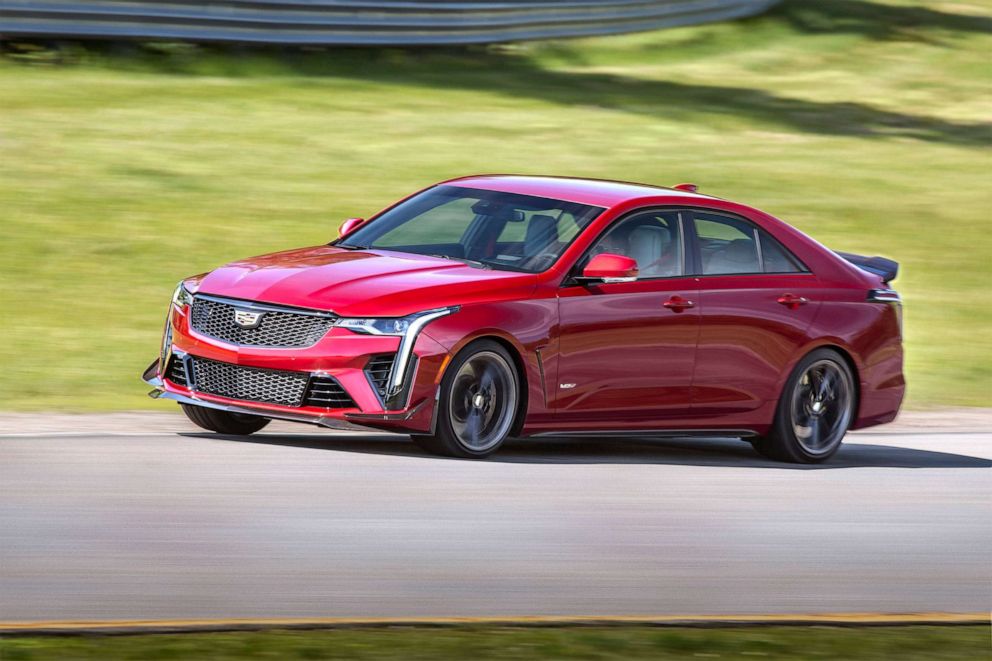
These cars mark an end to an era for Cadillac, Roma said, adding that neither he nor his team realized their significance until halfway through the development process.
"The Blackwings are a swan song to the internal combustion engine and the V-8," he said. "The pressure was weighing on us. Clearly these cars were designed for the ultimate enthusiast. We obsessed about lap times and metrics."
He added, "But performance is not going away with EVs."
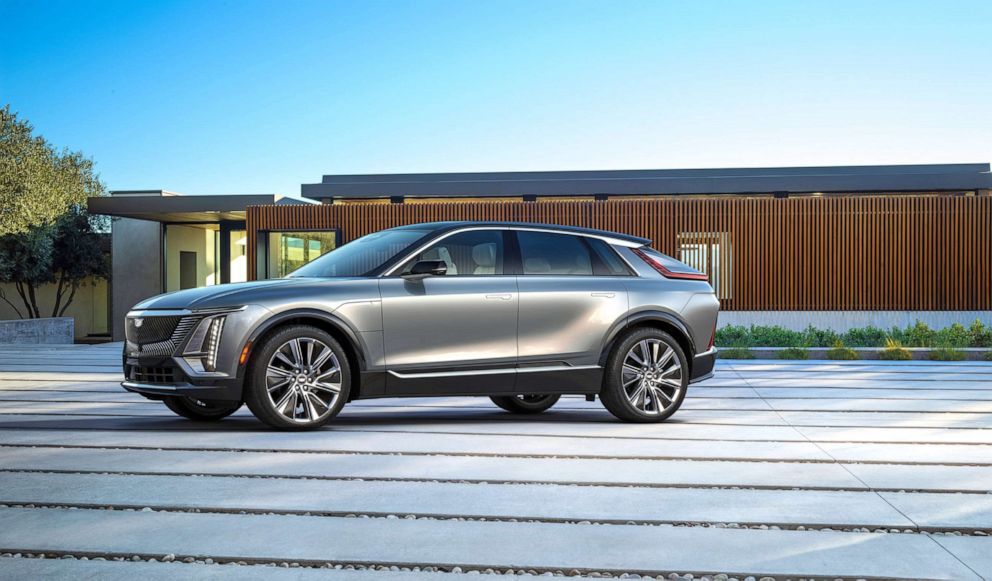
Karl Brauer, executive analyst at iSeeCars.com, said enthusiasts are frantically buying ICE sports cars -- even used ones -- before they're gone. The extensive wait times for new Porsches and Lamborghinis in addition to the absurd markup on car prices send a signal to automakers that electrification has its drawbacks, he argued.
"There are two opposing forces -- the die-hard enthusiasts, which are a small fraction of the market -- and government," Brauer told ABC News. "Usually enthusiasts lose."
He pointed to Ferrari's 458 Speciale, a mid-engine sports car with a naturally aspirated V-8 powerplant that was produced from 2010 to 2015.
"That car had no electrification and everyone wants one now," he said. "It represented the last generation of traditional Ferrari engineering."
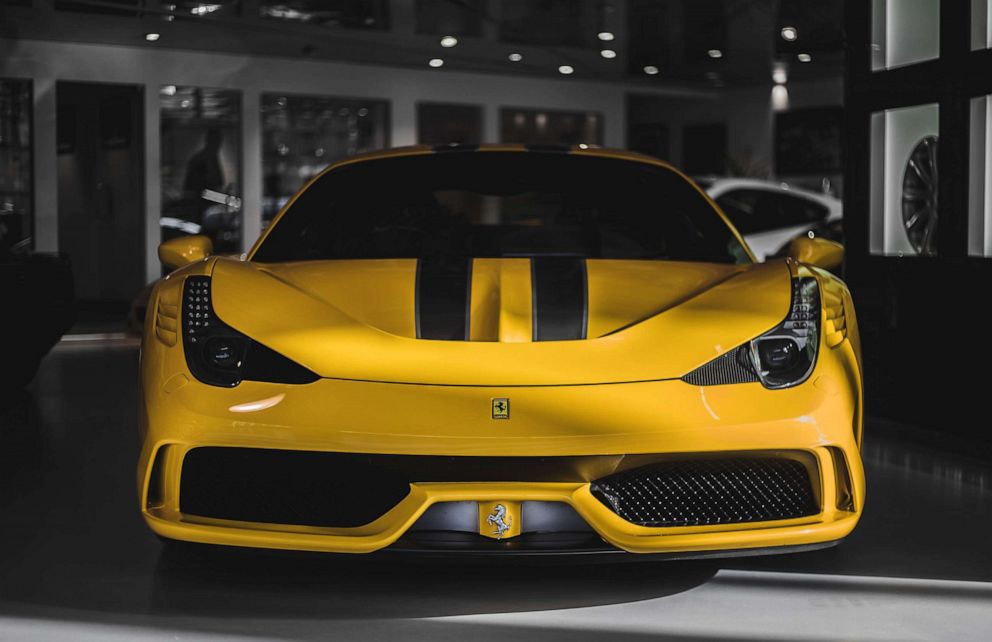
Brauer said he's closely watching to see if any sports car makers hold out on electrification.
"I don't see it as an asset. Electrification is not fully evolved yet," he argued. "I genuinely believe there is a number of enthusiasts who are starting to panic about EVs."
Andrea Baldi, CEO of Lamborghini America, conceded that owners are still clamoring for gas-powered thrills.
"There is still a huge appetite for internal combustion engines," Baldi told ABC News. "Today there is no question -- everyone prefers them. This is what they consider the purest expression of a super sports car."
The STO, the newest addition to the Huracan family, sprints from 0-62 mph in 3 seconds and bellows when the driver stands on the accelerator. The hardcore supercar's naturally aspirated V-10 engine produces 630 horses and will likely be the last from Lamborghini; a plug-in hybrid successor arrives in 2024.
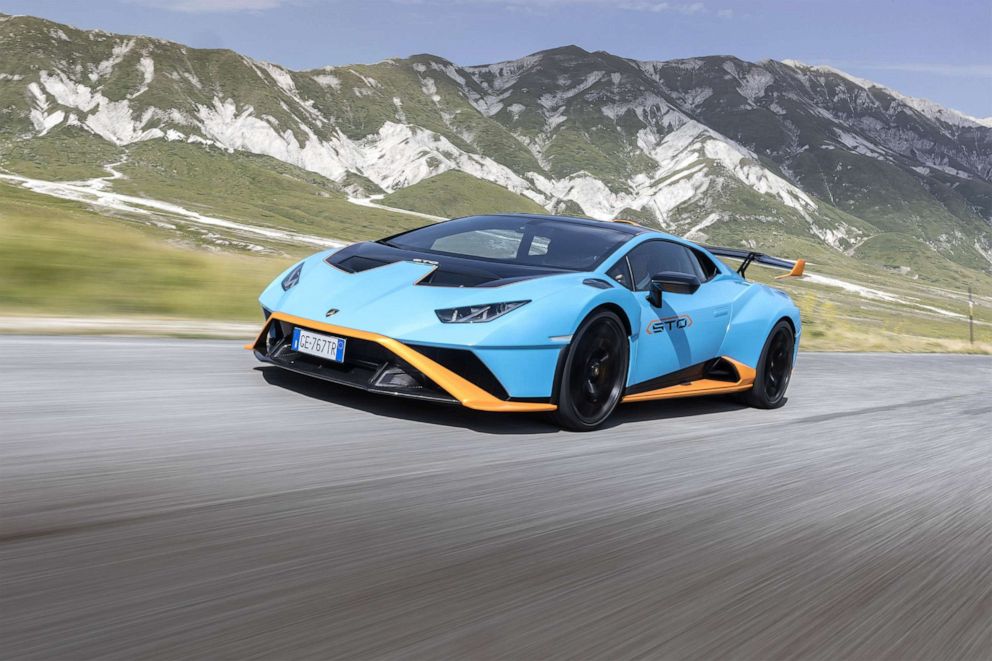
The next generation of the Aventador, Lamborghini's flagship model with a ferocious V-12, will come with a cord for charging an electric battery in 2023. A fully-electric Lamborghini launches in the second half of the decade.
Baldi, however, said the storied automaker is not abandoning its legendary V-10 and V-12 engines. But the company has realized that it cannot continue producing gas-guzzling sports cars in an era of increasing regulation.
"What we will see in the Huracan and Aventador successors will be dramatically disruptive," Baldi said. "The V-10 and V-12 engines will reach full their potential soon."
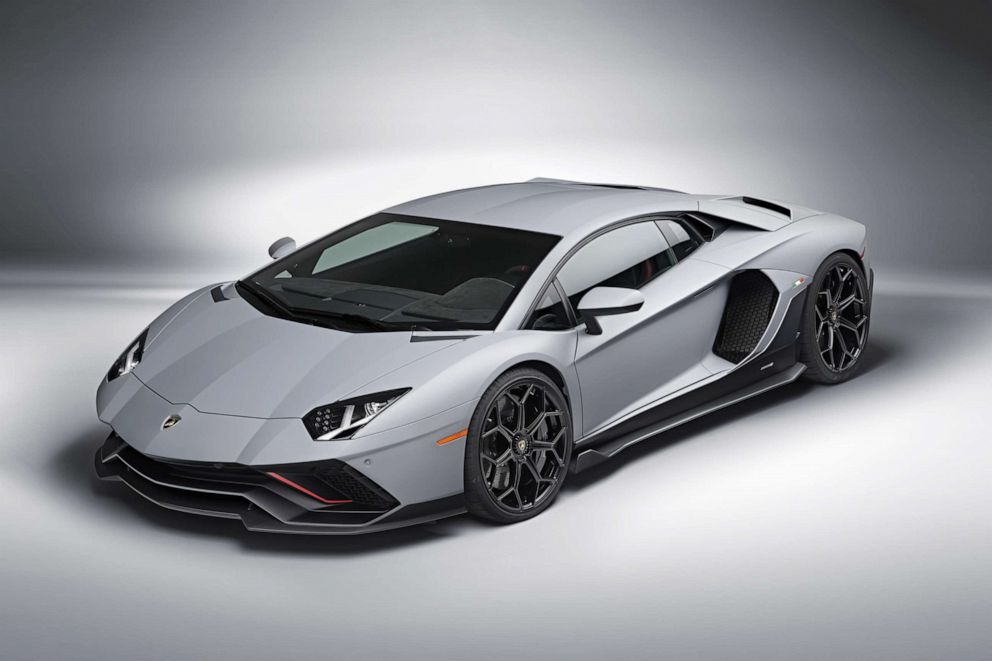
German automaker Mercedes-Benz will go all-electric by 2030, with a battery-powered option for every vehicle by 2025. Until then, Philipp Schiemer, CEO of Mercedes-AMG, said the company will offer more V-8 sports cars like the completely redesigned AMG SL roadster, which replaces the GT AMG coupe.
"There are still three years to go and there are some more interesting projects yet to come," he told ABC News. "There is a persistently high demand for our V8 models. I’m pretty sure we will see, feel and drive the V-8 still for a while."
The seventh generation SL, an automotive icon since its launch in 1954, got modern updates like all-wheel-drive and a power-folding fabric top in this iteration. Two potent engine configurations are also available: a twin-turbo 4.0-liter V-8 with 480 hp in the SL 55 or 560 hp in the SL 63. A plug-in hybrid SL arrives next year.
"Mercedes-AMG is right in its transition phase and well prepared for a pure electric future," Schiemer said. "The V-8 is not dead. It will survive also in combination with our E Performance hybrid technology."
Porsche's nimble 718 Cayman and Boxster mid-engine sports cars are going electric by 2025, according to a report from Car and Driver. That may explain the massive demand for the 2023 Cayman GT4 RS, a naturally aspirated, 493 hp road rocket with a 9,000 RPM redline. Even longtime Porsche owners can't get an allocation for one. A Porsche spokesperson would not confirm the 718 report, telling ABC News: "As a matter of policy we are not able to comment on speculation about future products."
Ralph Gilles, chief design officer at Stellantis and a serious enthusiast, has pledged that Dodge's Charger and Challenger muscle cars will still appeal to fanatics when they go electric. Dodge is preparing to launch an electric muscle car by 2024, according to CEO Tim Kuniskis, with production of the revered supercharged Hellcat V-8 engine ending next year.
"We are pretty confident that we have several good solutions that will be an alternative visceral stimulus. We're going to thrill in a different way," Gilles told ABC News.
Brauer is skeptical; Hellcat muscle cars "selling like crazy" and collectors are "scrambling" to get one, he said. Jominy, however, disagrees.
"The muscle car segment is shrinking rapidly. An electrified powertrain brings it relevance," he said.
Cadillac's Roma acknowledged that building performance EVs are more challenging and engineers are struggling with the nascent technology.
"Can you cool the battery, can you make the car light enough? All that becomes more difficult," he said. "There is no defined recipe for an EV performance car."
Enthusiasts will have to accept that internal combustion engines are not going to make a comeback, Jominy explained.
"The train is not stopping. Electrifying cars is the way to go in terms of performance -- not just for emissions," he said.
There is a silver lining, though: this recent crop of sports cars will at least satiate the desires and wants of performance die-hards and muscle car fans.
"Automakers are going out with their best-ever engines. These will be some of the most-sought after vehicles," Jominy said.






